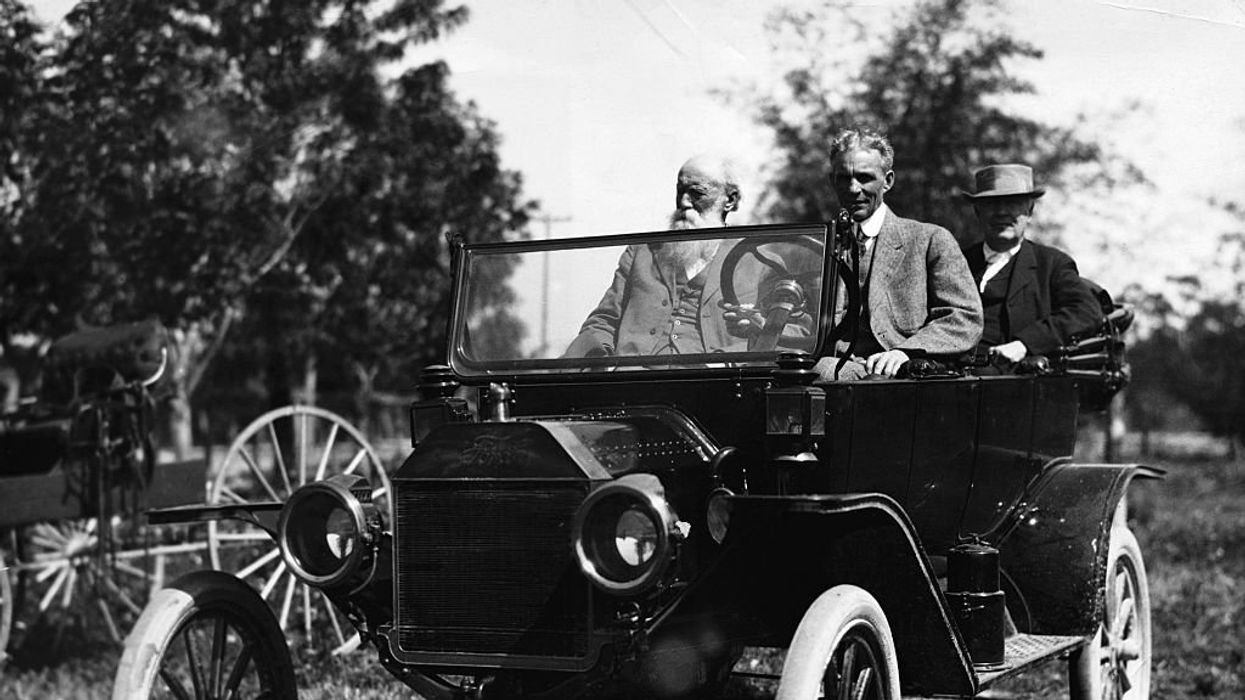
Bettmann/Getty
An American genius helped build the 20th century.
Gasping people shuffled through the 1939 New York World’s Fair wearing commemorative pins that said “I have seen the future.” And they were right. They had witnessed the world as we know it.
Decades before "Back to the Future" captured our imaginations with a time-traveling DeLorean, a man named Norman Bel Geddes gave people a look at the America of today.
He also created the case for the IBM Mark I computer, which was used for the Manhattan Project and the atom bomb, a different kind of light with a different sort of halo.
He was known as the Leonardo DaVinci of our time. But by the time of his death at 65 in 1958, he was a nobody.
Today, hardly anyone remembers the name Norman Bel Geddes. All his life, he was a visionary. He left school in ninth grade, shortly after sketching a mural of his school on a chalkboard. The detail was stunning.
And for a good 40 years, he was the most famous inventor in America. He worked for Chrysler, Philco, RCA, IBM, you name it. He created everything from a chrome cocktail set to seltzer bottles, from office furniture to electric typewriters and futuristic radios.
He improved fountain pens, garters, and fly swatters; designed planes, airliners, boats, and trains; invented the streamlined ocean liner — the “Ocean Greyhound” — and dabbled in architecture.
He loved the car and the road beneath it. You’ve probably seen his teardrop-shaped automobile, like something out of an old comic book. He designed Chrysler Airflows, which never caught on. In his book, "Magic Motorways," Bel Geddes envisioned cars that drove themselves and vehicles not all that different from Elon Musk’s Cybertruck.
In 1927, he combined all of his skills when General Motors commissioned him to create the city of the future. He called it “Futurama.” It was a full acre of miniature landscape and city, with half a million unique buildings, a million little trees, an interstate with over a dozen lanes, and one giant scene full of movement, with 50,000 whizzing cars and all kinds of flying contraptions.
It was the most-visited exhibition at the 1939 New York World’s Fair — a whopping 27 million people.
Captivated audiences, about 600 people at a time, took a 20-minute ride on a conveyor belt through this miniature utopia. They were surrounded by light and sound as if they were birds above an advanced civilization.
Futurama introduced Americans to the superhighway.
A few years after Bel Geddes died, his vision became a reality with the creation of the Pennsylvania Turnpike, 160 miles of highway between Pittsburgh and Harrisburg. Its toll cost $1.50 and it took about three hours to drive from one end to the other.
It was a futuristic alternative to the Lincoln Highway, the first road designed for automobiles in America, from coast to coast.
By comparison, the Pennsylvania highway was alien technology — Futurama brought to life. The concrete seemed to float in the air. Looking at it — looking at a highway for the first time, at the entrance lanes and exit lanes, at the curlicue interchanges — must have been shocking.
For the first six months, there was no speed limit. This turned out to be a bad idea, but it was fun while it lasted.
You could go as fast as possible. And for a moment, it was like you were flying. But instead of the conveyor belt of the 1939 New York World’s Fair, it was a real-life Futurama superhighway.
Part of what made Futurama so realistic is Bel Geddes’ love of the stage.
Before his career as the American DaVinci, he designed sets and costumes for movies and plays. He loved to direct and produce on Broadway, at the Metropolitan Opera, and wherever there was a stage.
He even helped design the set of "Things to Come" by H.G. Wells.
He was also obsessed with lighting. He designed entire stage lighting systems. He loved light.
He also created the case for the IBM Mark I computer, which was used for the Manhattan Project and the atom Bomb, a different kind of light with a different sort of halo.
It makes sense that a visionary like Norman Bel Geddes saw the future as bright, enormous. That all of his inventions seem to be constantly in motion. He knew that nothing travels faster than light.